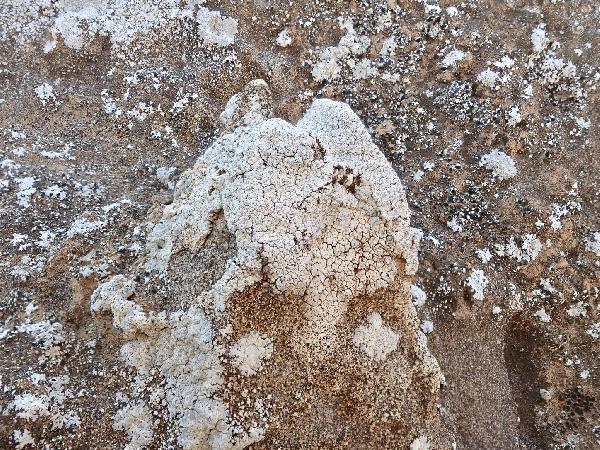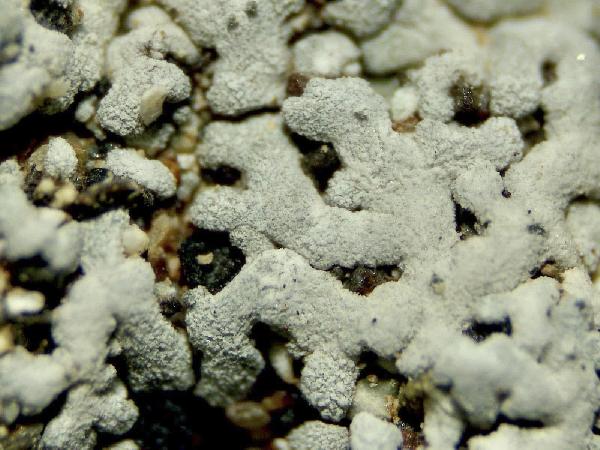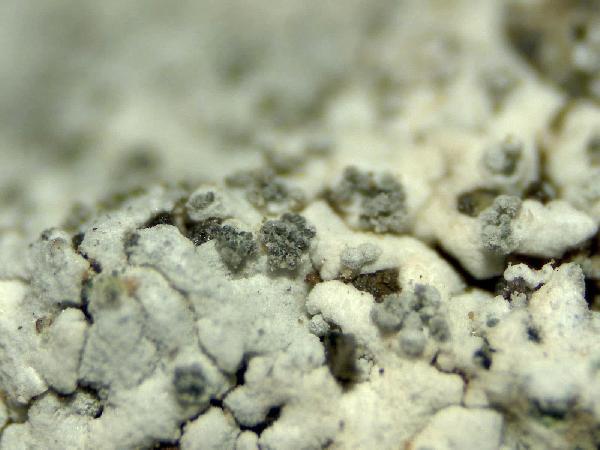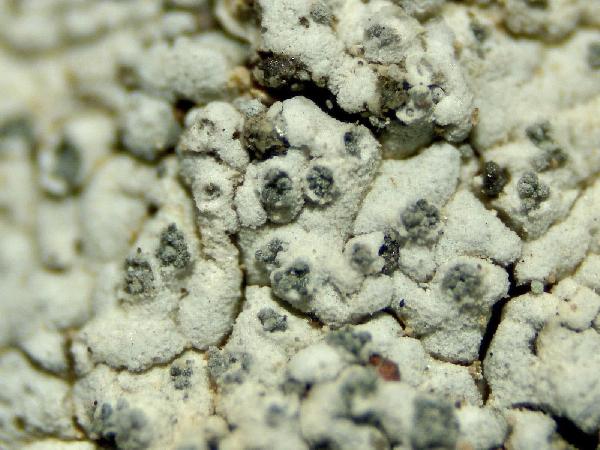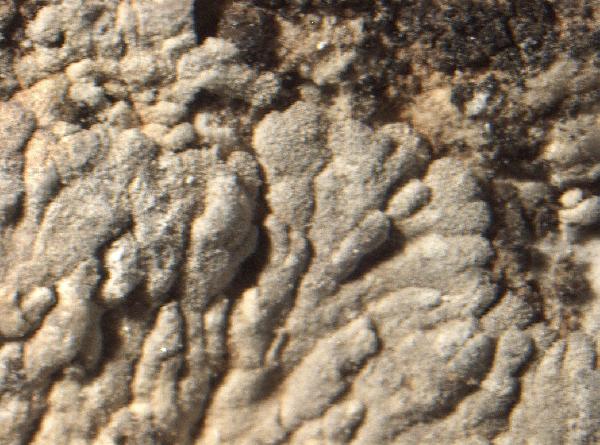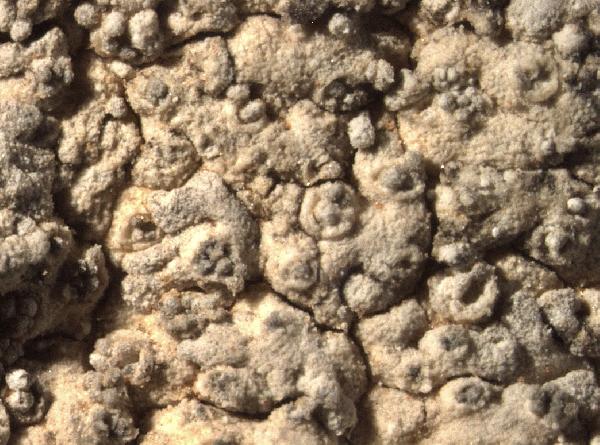Coscinocladium gaditanum (Clemente) A. Crespo, Llimona & D. Hawksw.
in Crespo & al., Taxon, 53: 409, 2004. Basionym: Variolaria gaditana Clemente - Ens. Veg. Andalucia: 295, 1807.
Synonyms: Buellia lisbonensis (Samp.) Werner; Coscinocladium occidentale Kunze; Lecanora lisbonensis Samp.; Placodium lisbonensis (Samp.) Klem.; Psoroma lisbonense (Samp.) Samp.; Ricasolia cesatii var. plumbea Bagl.; Solenopsora cesatii var. plumbea (Bagl.) Zahlbr.
Distribution: C - Tosc (TSB 38266), Sar (Crespo & al. 2004). S - Si (Nimis & al. 1994, Ottonello & Salone 1994, Crespo & al. 2004).
Description: Thallus crustose-placodioid, bluish white- to grey-pruinose, sorediate, forming orbicular, up to 3(-5) cm wide rosettes which are often confluent, covering large surfaces. Central parts areolate, marginal lobes contiguous to laterally subimbricate, 1-5 mm long, (0.3-)0.5-1 mm wide, the tips only slightly widened. Soralia arising on the lobe surface, small (c. 0.2-0.3 mm across), circular, well-delimited by a thin thalline margin, often raised, with granulose, 50-55(-90) μm wide soredia more or less concolorous with thallus, covered with a layer of brownish angular cells and a variably developed layer of minute colourless crystals. Cortex covered and interspersed with coarse crystals, of hyphae arranged perpendicularly to the surface, the upper 1-3 cells brownish and ca 3.5 μm wide; medulla white, I-. Apothecia unknown. Pycnidia dark, immersed, globose, with pleurogenous conidiogenous cells. Conidia cylindrical, 3.8-5 x c. 1.3 μm. Photobiont chlorococcoid. Spot tests: cortex and medulla K-, C-, KC-, P-, UV- or UV+ pale yellow. Chemistry: thallus with low amounts of zeorin plus sometimes an unknown substance.Note: a mainly western, Mediterranean-Atlantic species growing on soft calcareous rocks wetted by rain and exposed to humid maritime winds, mostly on horizontal surfaces, often forming large monospecific stands. It is locally abundant along the western coasts of Sicily and Sardinia.
Growth form: Crustose placodiomorph
Substrata: rocks
Photobiont: green algae other than Trentepohlia
Reproductive strategy: mainly asexual, by soredia, or soredia-like structures (e.g. blastidia)
Most common in areas with a humid-warm climate (e.g. most of Tyrrenian Italy)
Taxon bound to maritime-coastal situations
Commonnes-rarity: (info)
Alpine belt: absent
Subalpine belt: absent
Oromediterranean belt: absent
Montane belt: absent
Submediterranean belt: absent
Padanian area: absent
Humid submediterranean belt: absent
Humid mediterranean belt: rare
Dry mediterranean belt: extremely rare

Predictive model
Herbarium samples
Growth form: Crustose placodiomorph
Substrata: rocks
Photobiont: green algae other than Trentepohlia
Reproductive strategy: mainly asexual, by soredia, or soredia-like structures (e.g. blastidia)
Most common in areas with a humid-warm climate (e.g. most of Tyrrenian Italy)
Taxon bound to maritime-coastal situations
Commonnes-rarity: (info)
Alpine belt: absent
Subalpine belt: absent
Oromediterranean belt: absent
Montane belt: absent
Submediterranean belt: absent
Padanian area: absent
Humid submediterranean belt: absent
Humid mediterranean belt: rare
Dry mediterranean belt: extremely rare

Predictive model
| Herbarium samples |
 INDEX FUNGORUM
INDEX FUNGORUM
 GBIF
GBIF








